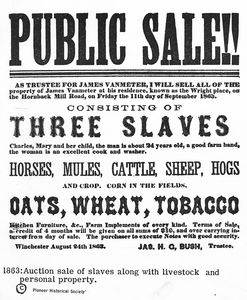So, I have an idea that is really a request. When we talk of society, we talk as though mutual recognition was a possibility that existed at the time of slavery. I think sure it did, but it didn’t. Exploring this was the purpose of the Letter post. Slavery is a complex system of seeing bodies as cyborgs, which to me, on some level means sexually viable for humanoid reproduction (at the cusp of recognition), yet not fully human. So, it’s about bodies that are resources of reproduction, both in terms of the almost human and labor, especially manual labor.

So slavery was abolished in the west. I want to say not exactly. The slave trade, the need for slavery to be so focused on the bodies as technology, each with its own individual value, and skills is gone. But it is so ingrained in our culture, it has become such a point of articulation that slavery doesn’t need to exist as such anymore.
Slavery is a technique. As a result, we have situations like the Emory president speaking of the 3/5ths compromise and not realizing he’s made a horrible mistake… only not really, because in this system we have now, this slavery as technique mode of labor production, there are people who are 3/5ths. They are not in power. But they do the labor that ensures those with access to power and wealth stay in their positions. We have comments like the tweet below that instigated this post:
Slavery as technique. RT @sinboy: “We are ruled by people who think $250k/year means you’re poor, but the minimum wage is too high” – Atrios
— Jade D. (@jadedid) February 28, 2013
We all buy into the idea of “Human Resources” without realizing what we are saying when we speak these words. Hint, if Human Resources was really about serving the people that worked at the company/institution etc, I maintain that it would be called the “Office of Humanity”.
Even more than the things that are happening here at home in the states, we have people working in virtual slave positions around the world. It is the dark side of globalization and global connectivity through media devices. We can buy our cheap goods while the labor that went into creating them and bringing them to us remains invisible. Their labor is our pacifier. We are coddled by our ability to attain more than others. But, that’s part of the technique as well. Those with the bigger planation, or more stuff, are imagined to have more power. So we work to attain more. With that, I guess I should drop the link so we can all look at our slavery footprint.
The thing about understanding slavery as a technique is, techniques are in the background. We don’t have to think about them. They are built into how we move through society. The biggest issue for me is, as long as we get stuck focussing on and speaking about slavery as technology, we won’t be able to move it beyond the black body. As a technique, it is all encompassing. We all have a hand in ensuring the technique remains a part of our societal makeup. And as long as we live in the fancy big house, we seem to ignore all of those people in the global fields who are making sure we get our next fix of cheap goods… And I cannot forget the mostly black and brown people that clean the halls of my own University for lord knows how much money, but only in the middle of the night, when they can’t be seen.

